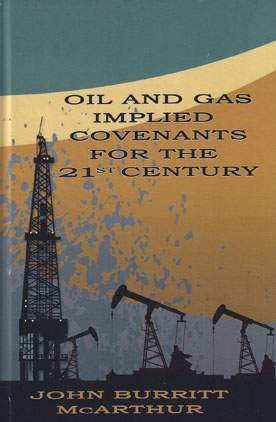
Oil-and-Gas Implied Covenants for the 21st Century: The Next Step in Evolution is the first book in over 75 years to be devoted to the implied covenants that courts apply to oil-and-gas and other natural-resource leases.
Implied covenants, which apply to all oil-and-gas and other natural-resource leases that use a royalty structure, are hugely important. The United States has reclaimed its position as the world's largest natural-gas producer, it may soon again become the largest oil producer, and the oil-and-gas industry once again is rapidly growing. All this production comes from leased land. And the covenants are the basic body of law, an oilfield common law, developed to carry out the basic purpose of these leases.
Oil-and-Gas Implied Covenants features an extended treatment of the issue of greatest controversy in recent years: whether the lessee has to bear all costs of making oil or gas "marketable," or instead can deduct some of those costs from the landowner's interest.
Oil-and-Gas Implied Covenants also focuses on the duty to drill additional zones or formations. This affects many shale and other unconventional reservoirs -- the main sources of the surge in oil and gas production over the last decade. Many of these leases are being held by older wells producing from conventional reservoirs. The implied duty to develop and explore should empower lessors to force drilling into the new, unconventional reservoirs, too. If prices begin to drop and lessees begin cutting back on drilling, this duty will end up being a major litigation weapon in the geographic areas into which production is expanding today.
On another issue that will be vitally important in the future but has received far too little recognition, the author surveys the law on environmental cleanup and restoration. It is the author's recommendation that lessor and lessee would be better served by treating these issues under a new contract-based implied duty to restore rather than the current treatment under the torts of negligence, nuisance, and trespass. The author also recommends that courts consider a new implied duty to disclose material facts and a new duty limiting costs deducted from the royalty share to actual, reasonable costs.
Finally, Oil-and-Gas Implied Covenants illustrates how covenants should apply to hard minerals and other natural resources leased on a royalty-structure basis. And it identifies the areas where implied covenants should be useful to parties in international arbitration and litigation. Thus it points to important new applications of this settled body of law.